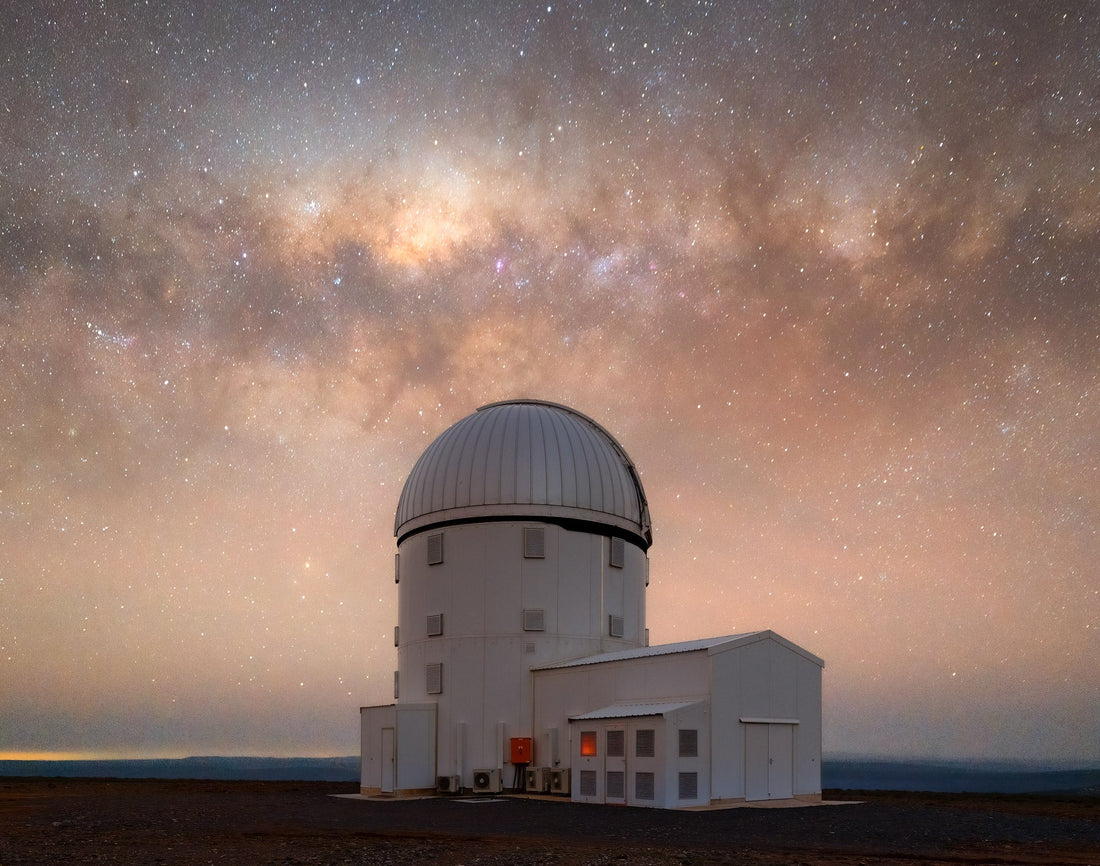
Shooting the Stars: My Night Under the Milky Way at Sutherland’s SAAO and SALT Observatory
Kyle GoetschShare
There’s something truly humbling about standing under a sky so dark and vast that it feels like the entire universe is laid out above you. For me, that place is Sutherland — South Africa’s astronomical capital and home to the South African Astronomical Observatory (SAAO) and the Southern African Large Telescope (SALT).

I’ve always been drawn to the night sky, but photographing the Milky Way here, beneath some of the clearest and darkest skies in the Southern Hemisphere, is something else entirely.
The Journey to Sutherland
Getting to Sutherland feels like a journey into another world. Hours of driving through the barren Karoo, with little more than rocky plains and the occasional windmill, eventually lead you to this small, sleepy town. But above it all, a world-class observatory sits perched on a hill, waiting for nightfall.

I arrived with my gear packed and expectations high — but even then, the reality blew me away. As the sun dipped below the horizon, the temperature dropped fast, and the sky began to fill with stars, one by one. And then, as full darkness settled in, there it was — the Milky Way arching high overhead, so bright it cast shadows on the ground.
Photographing the Milky Way at SALT
SALT itself is an impressive subject to photograph: its giant dome set against a star-filled sky feels like something out of science fiction. But capturing it with the Milky Way behind? That’s magic. I like to start shooting well after astronomical twilight, using a 20mm lens to capture as much of the sky as possible. Settings vary depending on conditions, but generally, I find myself around 15 to 20 seconds, f/2.0 or f/2.8, and an ISO between 3200 and 5000 to bring out the detail without too much noise.

One of the biggest challenges in Sutherland is dealing with the freezing cold nights. Even in summer, the temperature plummets, and I’ve learned the hard way to pack more layers than I think I’ll need. But it’s all worth it when you stand there, camera clicking away, under a sky that feels almost too big to comprehend.
Composition Tips and Panoramas
Shooting at SAAO and around SALT offers incredible opportunities to frame these man-made scientific giants beneath the timeless stars. I always look for foreground interest — whether it’s the observatory domes, rocky outcrops, or even my own vehicle silhouetted against the galaxy.

One of my favorite techniques for capturing the sheer scale of the Milky Way is shooting panoramas. By taking multiple overlapping shots and stitching them together, you can create sweeping images that show the entire arc of the galaxy above the observatory. It takes patience and careful alignment, but the results are breathtaking — a complete window into the universe above.

A Reminder of Our Place
Every time I’m out shooting the stars in Sutherland, I’m reminded of how small we are and how vast the universe is. Standing beneath the Milky Way, with SALT behind me and the quiet of the Karoo all around, it’s impossible not to feel both insignificant and deeply connected at the same time.

I’ve been lucky to photograph the night sky in many places, but Sutherland holds a special place in my heart. It’s a place where science and wonder collide, and where the sky puts on a show every clear night.
If you’ve ever had the chance to photograph the night sky here, I’d love to hear about your experience. And if you haven’t — maybe it’s time to plan that trip with me. Just don’t forget your thermals!
